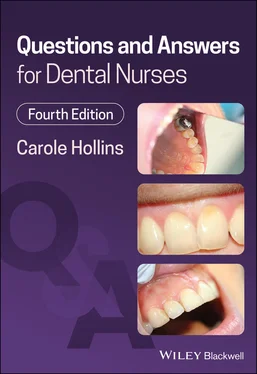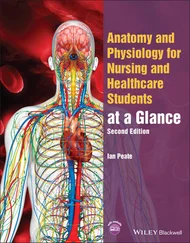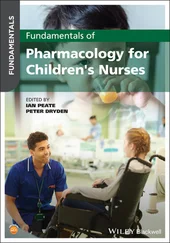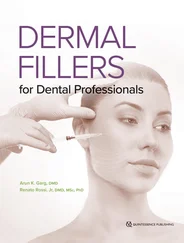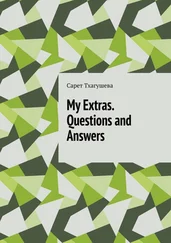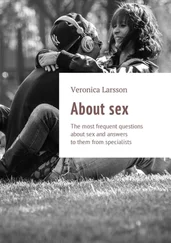Carole Hollins - Questions and Answers for Dental Nurses
Здесь есть возможность читать онлайн «Carole Hollins - Questions and Answers for Dental Nurses» — ознакомительный отрывок электронной книги совершенно бесплатно, а после прочтения отрывка купить полную версию. В некоторых случаях можно слушать аудио, скачать через торрент в формате fb2 и присутствует краткое содержание. Жанр: unrecognised, на английском языке. Описание произведения, (предисловие) а так же отзывы посетителей доступны на портале библиотеки ЛибКат.
- Название:Questions and Answers for Dental Nurses
- Автор:
- Жанр:
- Год:неизвестен
- ISBN:нет данных
- Рейтинг книги:5 / 5. Голосов: 1
-
Избранное:Добавить в избранное
- Отзывы:
-
Ваша оценка:
- 100
- 1
- 2
- 3
- 4
- 5
Questions and Answers for Dental Nurses: краткое содержание, описание и аннотация
Предлагаем к чтению аннотацию, описание, краткое содержание или предисловие (зависит от того, что написал сам автор книги «Questions and Answers for Dental Nurses»). Если вы не нашли необходимую информацию о книге — напишите в комментариях, мы постараемся отыскать её.
An essential study aid for dental nursing students preparing for the NEBDN exam Questions and Answers for Dental Nurses
Questions and Answers for Dental Nurses 4th Edition
Questions and Answers for Dental Nurses — читать онлайн ознакомительный отрывок
Ниже представлен текст книги, разбитый по страницам. Система сохранения места последней прочитанной страницы, позволяет с удобством читать онлайн бесплатно книгу «Questions and Answers for Dental Nurses», без необходимости каждый раз заново искать на чём Вы остановились. Поставьте закладку, и сможете в любой момент перейти на страницу, на которой закончили чтение.
Интервал:
Закладка:
Topic: Disease prevention and health advice
For each of the following disease prevention and health advice questions, select the requested number of most appropriate answers from the option list. Each option might be used once, more than once or not at all.
1 1450 ppm
2 5000 ppm
3 22,600 ppm
4 Crowded teeth
5 Hydrogen peroxide
6 Mouth breathing
7 Sodium fluoride
8 Stannous fluoride
9 Unbalanced occlusion
1 A young mother is concerned to learn that her 5‐year‐old son has several areas of demineralisation and two cavities in his deciduous teeth when checked by the dentist, as she ensures his teeth are brushed twice daily with ‘milk teeth’ type toothpaste. The dentist explains that this type of toothpaste has too little fluoride for children over 3 years of age. Which two of the options listed are the most likely fluoride concentrations that the dentist will recommend for regular toothbrushing and use for topical fluoride applications to the child, in ppm?
The correct answers are a) and c). All children over 3 years of age should be using toothpastes with the adult concentration of fluoride at 1450 ppm, to provide the maximum level of protection to their deciduous teeth and then their permanent teeth as they erupt. At each recall appointment, the child should also have a fluoride gel applied to all his teeth to help strengthen them against further carious attack. The gels are typically a fluoride strength of 22,600 ppm.
1 Modern toothpastes contain many different constituents, and some patients may find it difficult to determine which product is best for their specific oral health needs. The dental team are well placed to advise patients about the most suitable products available for their particular needs, depending whether they require products to combat dental caries or periodontal disease. Which two of the options listed are constituents that may be found in a toothpaste designed to protect against caries and relieve sensitivity?
The correct answers are g) and h). Fluoride is the ingredient present to protect against dental caries, and many toothpastes contain it as sodium fluoride at 1450 ppm. Stannous fluoride is present in some ‘sensitivity’ toothpastes to help reduce the electric shock‐type sensation that some patients experience with cold drinks, foods or when breathing in cold air.
Objective Structured Clinical Examination
For the sake of completeness, an overview of the practical element of the National Diploma examination is given here to assist candidates in readying themselves for the final part of the examination. More detailed information is given in the textbook Levison’s Textbook for Dental Nurses 12th Edition . The OSCEs are usually held several weeks after each round of written examinations has been completed, with only those candidates who pass the written section being eligible to then enter for the OSCEs.
The OSCEs provide an accurate and fair assessment of all candidates while carrying out various practical or clinical tasks. As the full name suggests, the examination style is both objective and structured in the way that candidates are assessed while undertaking OSCEs. The examiner does not ask any questions of the candidate during each section of the examination (so they are objective and not subjective, or rather, not based on the examiner’s opinion after having asked the candidate any random questions), and the examiner grades each candidate’s practical/clinical performance against set criteria as they carry out the required task. The set criteria are exactly the same for every candidate at whichever examination centre they attend and are followed by every examiner, so the OSCEs are a structured examination.
Each examination sitting will have up to 15 OSCE stations that every candidate must go through, and they are usually timed at 5 minutes each. Other than to welcome candidates to each test area and ask if they have read the ‘candidate instructions’ for the individual test beforehand, the examiner does not speak to the candidate but merely observes their performance within the 5‐minute timing.
There are four general types of practical assessment that the OSCEs will cover, and each is designed to test both the professional and practical skills of the candidate.
Communication skills – such as giving specific oral hygiene advice or post‐operative advice to a patient (the patient will be a professional actor)
Medical emergency – such as an asthma attack scenario with a professional actor as the patient
Mixing skills – any dental material from within the NEBDN curriculum
Clinical skills – such as setting up instruments for a certain procedure or completing a charting exercise.
The candidate instructions will state the scenario relevant to the OSCE station, and the candidate is able to read these instructions before the 5‐minute timing starts. The instructions will be clear and concise, so that the task to be carried out by the candidate will be obvious to them. Where a patient (actor) is involved in the scenario, the candidate will be scored objectively by both the examiner and the patient for that OSCE station.
To ensure that every candidate is assessed objectively, the following system is strictly followed.
Every examination centre will carry out exactly the same OSCE assessments, using exactly the same resources.
All candidates and patient instructions will be worded exactly the same, in every examination centre.
All candidates will be marked against the same performance criteria and in the same way, as the examiners have been trained and calibrated to each other.
All candidates will rotate through the OSCE stations in a set order until they have completed the full cycle.
A single timer is used for each cycle of stations (usually a bell), so candidates cannot have too little, or too much, time at any station.
All candidates are allowed 1 minute to read the scenario and candidate instructions for each station, before entering the station and beginning the assessment when the bell rings.
No candidate is allowed to enter the station until the start of the 5‐minute assessment period.
The candidate may repeat the assessment within the 5‐minute time period if they wish.
The examiner will not ask any questions of the candidate.
Candidates may carry out a practical task while talking their way through it if they wish (some candidates may find this helps to focus their actions), but they will only be assessed on the performance criteria listed on the examiner mark sheet and not on anything they say.
There are no ‘killer’ stations, where the candidate must pass that one station or be failed for the whole OSCE examination.
1 Communication Skills
Multiple choice questions
1 Most dental workplaces will treat patients of a wide age range, from young children to elderly pensioners, and the communication skills required by the team to treat each group successfully varies greatly. Which one of the following options is the least likely communication skill to achieve successful toothbrushing compliance by a primary school‐age child?Able to ask questions of teamAppropriate vocabulary for ageDescribing likely dental treatmentHands‐on teaching techniqueUse of physical aids to teach
2 The act of communicating with someone is to give or exchange information with them, and this can be done both verbally and non‐verbally. Which one of the following non‐verbal communication actions would indicate that the listener is indeed listening to the speaker?Breaking eye contactContinuing another taskFacing themInterrupting themTurning from them
Читать дальшеИнтервал:
Закладка:
Похожие книги на «Questions and Answers for Dental Nurses»
Представляем Вашему вниманию похожие книги на «Questions and Answers for Dental Nurses» списком для выбора. Мы отобрали схожую по названию и смыслу литературу в надежде предоставить читателям больше вариантов отыскать новые, интересные, ещё непрочитанные произведения.
Обсуждение, отзывы о книге «Questions and Answers for Dental Nurses» и просто собственные мнения читателей. Оставьте ваши комментарии, напишите, что Вы думаете о произведении, его смысле или главных героях. Укажите что конкретно понравилось, а что нет, и почему Вы так считаете.
